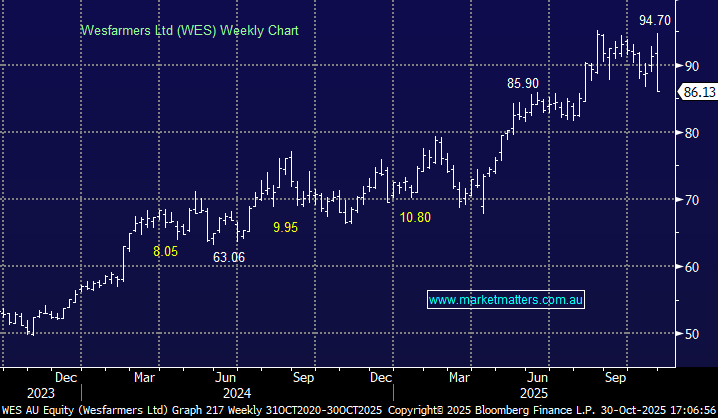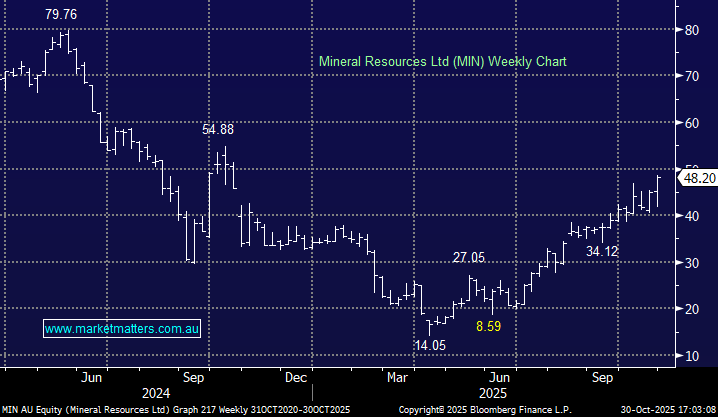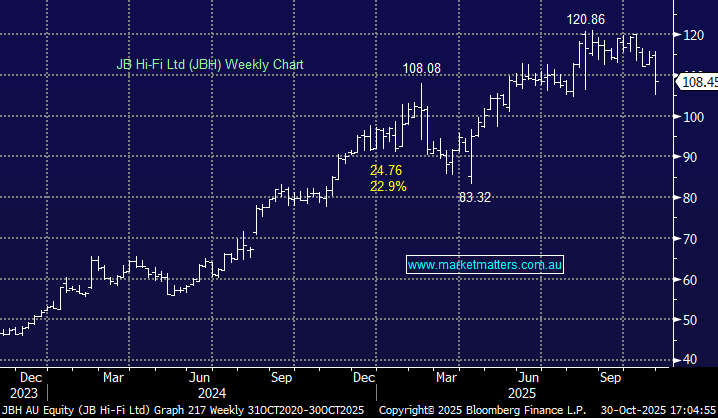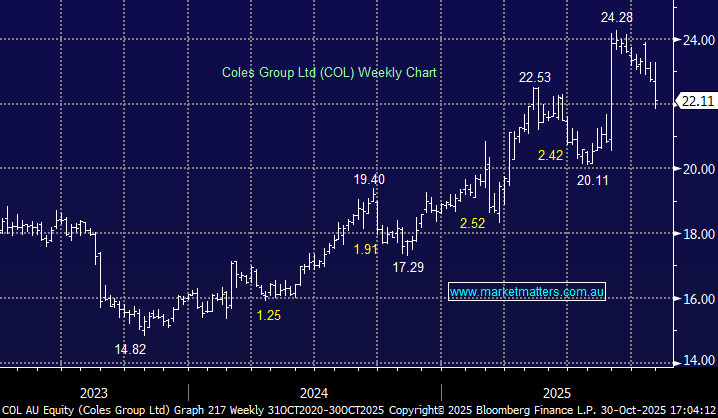- Market Matters Reporting Calendar: Australian FY25 Reporting Calendar in PDF Here & Spreadsheet Here
- What Matters Today in Markets: Listen here each morning or find all Market Matters Podcasts on Spotify.
We are now seven weeks into FY26, and global markets are trading at or near all-time highs. The ASX 200, including dividends, is up 4.7%, supported by a 13.7% rally in Resources and gains of more than 8% from Healthcare, Utilities, and Energy. In the US, the S&P 500 has risen 4.2% and the Nasdaq a more impressive 7.1%. Expectations of further rate cuts, combined with a resilient economic backdrop, are driving the move. Financial conditions post-tariffs have so far surprised on the upside, as have corporate earnings in the US. Locally, we will have more data on company results over the next two weeks.
- Inflation is easing, interest rates are falling, corporate profits remain robust, and economic indicators such as job growth and consumer spending are solid.
While these factors provide a strong tailwind for equities, valuations are now stretched. The ASX 200 is trading on an estimated P/E of 20x with a forecast dividend yield of 3.27%. When the market yield is lower than the yield on risk-free government bonds, greater attention must be paid to the outlook for earnings growth. When interest rates were below 1% coming out of COVID, the phrase “TINA” — There Is No Alternative — was coined to describe the relative appeal of equities. Today, while bond yields have retreated from their highs, they remain elevated and attractive in relative terms, providing a genuine alternative for yield-focused investors, particularly in fixed-rate bonds that stand to benefit further if rates are cut again.
From an equity investor’s perspective, the focus now shifts to the level of growth that can reasonably be expected from equities at these valuations. From the 2022 low, the P/E multiple of the ASX 200 has expanded by eight points. At 21x, it is trading at a 40% premium to its historical average of 14.8x. In the US, the S&P 500 is on 27x — a 28% premium to the Australian market, and a more significant 68% premium to its long-run average of 16.1x.
There are clear reasons for the rally, with the main supporting factor being stronger-than-expected earnings. In the US, 2Q25 earnings have surprised to the upside by an average of 8.4% — the highest beat since 3Q21. The trend is clearly positive, as the UBS chart below highlights. Markets ultimately follow earnings, and in particular, earnings revisions. Upward revisions are, in MM’s view, the key driver of the current rally.
While earnings growth has provided the fuel, the real driver of share prices has been the expansion in the P/E multiple applied to those earnings. All else being equal, higher interest rates equate to lower P/E multiples, while lower rates support higher multiples. As interest rates fall, valuations tend to expand — but how much further can they reasonably go? Is a 21x multiple for the ASX200, where consensus is for little or no earnings growth in FY25, sensible? Markets are forward-looking, so the real focus is FY26. Ahead of local reporting, consensus points to ~5% EPS growth this year, while in the US the S&P 500 is expected to deliver ~14% EPS growth in FY26, following ~12.5% in FY25 (based on December year-end).
There is little doubt that equity valuations are collectively expensive, but they can remain elevated for extended periods. Importantly, valuations on their own are a poor tool for picking market tops. Historically, it is usually an external shock combined with high valuations that triggers a correction. We are not advocates of staying out of the market purely because valuations are high. However, when index-level P/E ratios are stretched, buying the entire market means investors are paying a premium, which typically translates into lower forward returns for passive investors, as much of the good news is already “priced in.” In periods like this, we tend to see greater dispersion between expensive and reasonably priced stocks, which creates opportunities for active managers.
- In an expensive market, stock picking becomes more important because index-level returns are capped by stretched valuations.


















